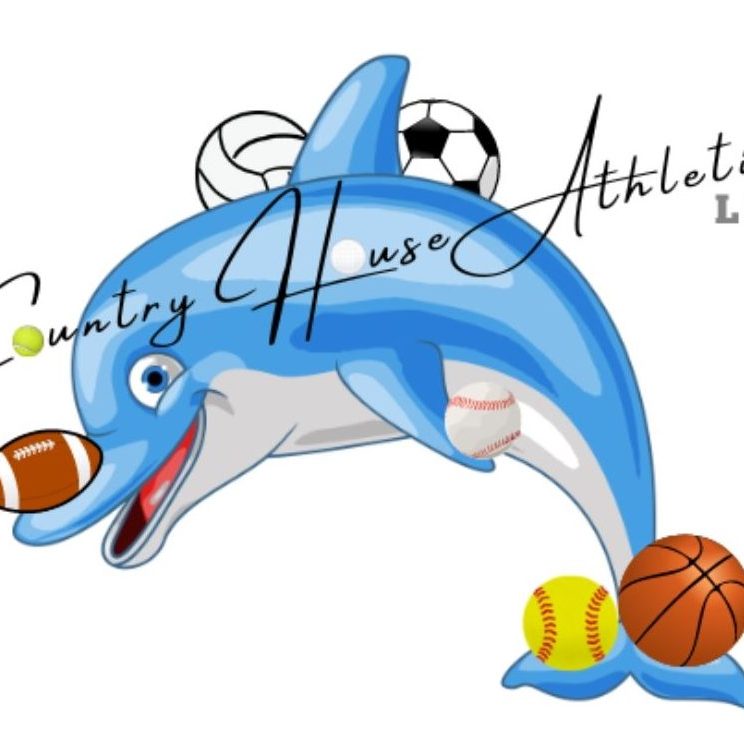When your child rolls their ankle during activity, your first immediate thought is probably a standard ankle sprain. However, while you may be right, you also have to be cautious because not all ankle sprains are the same. One particularly troublesome injury that often confuses parents is the high ankle sprain. While both injuries can sideline your athlete for some time, these injuries are very different in terms of severity, recovery time, and treatment. That’s why we here at Country House Athletics want to make sure parents are aware and doing everything they can to keep their athletic child moving in the right direction.
What is a Traditional (Lateral) Ankle Sprain?
That traditional ankle sprain you immediately think of, also called a lateral ankle sprain, happens when the foot rolls inward, stretching or tearing the ligaments on the outside of the ankle. There are two main ligaments that are typically involved in this type of injury. They are named the anterior talofibular (ATF) ligament and calcaneofibular (CF) ligament and are responsible for keeping your ankle stable. Lateral ankle sprains are common in athletes of all ages and can happen in almost any sport, especially those that involve jumping, cutting, or any type of sudden direction changes.
Signs of a Lateral Ankle Sprain:
- Swelling and bruising on the outside of the ankle
- Pain when bearing weight
- Tenderness around the bony part of the outside ankle
- Limited range of motion due to swelling and discomfort
Most mild to moderate lateral ankle sprains heal within 2-4 weeks with the proper rest, ice, compression, and elevation (RICE), followed by a basic rehabilitation plan to restore strength and mobility.
So the, what is a High Ankle Sprain?
A high ankle sprain, also known as a syndesmotic sprain, is a completely different type of sprain altogether. Instead of rolling the ankle inward, a high ankle sprain usually occurs when the foot is forced upward and twisted outward, causing injury to the ligaments that hold the two lower leg bones (tibia and fibula) together. These ligaments, collectively known as the syndesmosis, are essential for ankle stability, and injury to them can lead to prolonged pain and dysfunction.
Signs of a High Ankle Sprain:
- Pain above the ankle, rather than on the side
- Difficulty walking, especially when pushing off the toes
- Minimal swelling compared to lateral ankle sprains
- Increased pain when squeezing the shin just above the ankle
Because the syndesmosis is critical for stability, high ankle sprains take significantly longer to heal—sometimes 6-12 weeks or more, depending on severity. Your healthcare professional may even recommend some lengthy time in a boot or non-weight bearing for some time. Severe enough cases may even require surgery. However, don’t get too worried because if managed correctly then most of these injuries will not require surgical intervention.
Key Differences Between a High Ankle Sprain and a Lateral Ankle Sprain
| Feature | Lateral Ankle Sprain | High Ankle Sprain |
|---|---|---|
| Cause | Rolling inward (inversion) | Foot forced upward and twisted outward |
| Ligaments Affected | ATF, CF | Syndesmotic ligaments |
| Location of Pain | Outside of the ankle | Above the ankle between shin bones |
| Swelling/Bruising | Common and noticeable | Minimal or delayed |
| Recovery Time | 2-4 weeks (mild cases) | 6-12+ weeks (moderate to severe cases) |
| Treatment | Basic acute injury management, rehab, taping/bracing | Extended rest, gradual rehab, possible surgery |
Why This Matters for Parents
Understanding the difference between these injuries is crucial because they require much different approaches to treatment and recovery. A misdiagnosed high ankle sprain treated as a simple lateral sprain can lead to chronic instability, prolonged pain, and even more severe injuries down the road.
If your child experiences ankle pain above the joint, has difficulty walking, or isn’t improving with traditional ankle sprain treatment, it’s essential to have them evaluated by an athletic trainer or sports medicine physician. Early recognition and proper care can make all the difference in getting them back on the field safely and with as little headaches as possible.
Final Thoughts
Ankle sprains are one of the most common injuries in all athletics, but not all sprains are created equal. Knowing whether your child has a lateral or high ankle sprain can help you take the right steps toward recovery. When in doubt, seek professional guidance to ensure they heal properly and return to play stronger than before.
At Country House Athletics LLC, we’re committed to helping parents and athletes stay informed and proactive about sports injuries. Check back every Saturday as we continue to provide snippets of expert insight to keep your athlete performing at their best!
Has your child ever experienced an ankle sprain? Share your experience in the comments below, and let’s keep the conversation going on how to protect young athletes from unnecessary injuries!

No responses yet